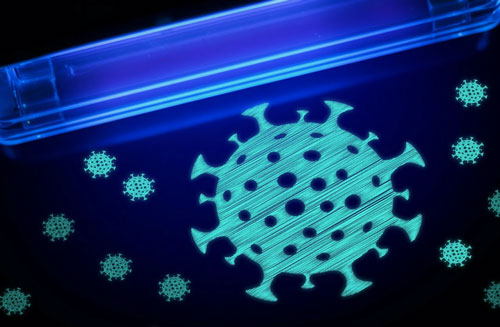DERMATOLOGY researchers at Henry Ford Health System, in collaboration with a team at the University of Michigan, have demonstrated that certain N95 respirators tainted with Covid-19 can be effectively and safely decontaminated for reuse using ultraviolet-C light (UV-C), a method commonly utilized for treating rare skin diseases.
Researchers say the outside and inside of the facemasks were decontaminated in a prototype phototherapy unit that dispenses a UV-C dosing level high enough to effectively kill the virus in less than two minutes while still preserving the facemask’s breathability, fit and overall integrity.
Of the five N95s used at Henry Ford and tested for the coronavirus in the study, the decontamination process worked best on two models — facepieces on 3M 1860 and Moldex 1511 and straps on 3M 8210 and Moldex 1511. The effects of the dosage varied on the other tested models and their straps, suggesting that the UV-C radiation can degrade them. Researchers say wiping the straps with ethanol before decontamination would likely be required as an additional disinfection step in the process to maximize the wearer’s safety.
Researchers emphasized that fit testing be required each time a disinfected facemask is returned for use or a new model is being worn for the first time.
The research, conducted in partnership with the University of Michigan, is published in the International Journal of Infectious Diseases.
“Our findings reveal a practical, and viable option should hospitals encounter shortages of N95s in the future,” says David Ozog, M.D., chair of Henry Ford’s Department of Dermatology in Detroit and the study’s lead author. “Using UV-C has been shown to be effective in killing other coronaviruses and the flu virus. We were able to replicate that sterilization effectiveness with COVID-19.”
Ozog stressed that facemask sterilization should only be used in severe shortages of N95s. Testing of the N95s for decontamination was performed at U-M’s SARS-CoV-2 research lab in Ann Arbor.
“When Dr. Ozog approached us about helping to demonstrate the effectiveness of their UV sterilization procedure with live SARS-CoV-2 virus, we immediately agreed and understood that we could provide some confidence to their healthcare workers that this procedure was effective,” says Jonathan Sexton, Ph.D., assistant professor of Internal Medicine and director of the U-M Center for Drug Repurposing and a study co-author.









